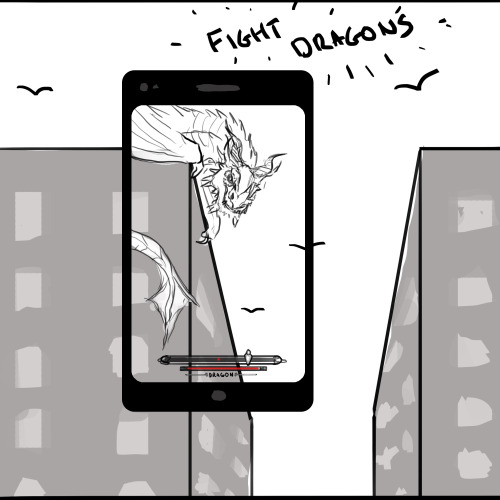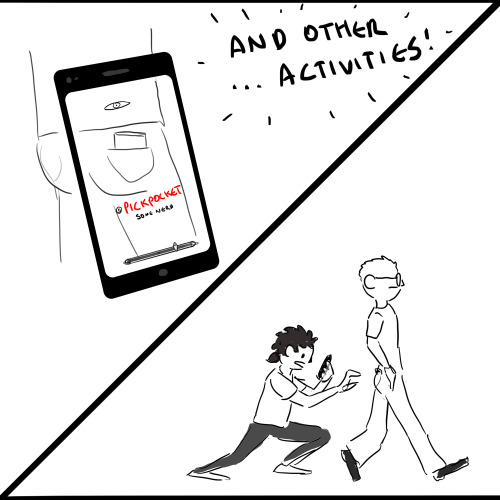The First Worry I Have Follows From One Of The Five Principles Of Robotics, Which States: Robots Should

The first worry I have follows from one of the five principles of robotics, which states: robots should not be designed in a deceptive way to exploit vulnerable users; instead their machine nature should be transparent.
To design a gendered robot is a deception. Robots cannot have a gender in any meaningful sense. To impose a gender on a robot, either by design of its outward appearance, or programming some gender stereotypical behaviour, cannot be for reasons other than deception – to make humans believe that the robot has gender, or gender specific characteristics.
When we drafted our 4th ethical principle the vulnerable people we had in mind were children, the elderly or disabled. We were concerned that naive robot users may come to believe that the robot interacting with them (caring for them perhaps) is a real person, and that the care the robot is expressing for them is real. Or that an unscrupulous robot manufacture exploits that belief. But when it comes to gender we are all vulnerable. Whether we like it or not, we all react to gender cues. So whether deliberately designed to do so or not, a gendered robot will trigger reactions that a non-gendered robot will not.
Our 4th principle states that a robot’s machine nature should be transparent. But for gendered robots that principle doesn’t go far enough. Gender cues are so powerful that even very transparently machine-like robots with a female body shape, for instance, will provoke a gender-cued response.
My second concern leads from an ethical problem that I’ve written and talked about before: the brain-body mismatch problem. I’ve argued that we shouldn’t be building android robots at all until we can embed an AI into those robots that matches their appearance. Why? Because our reactions to a robot are strongly influenced by its appearance. If it looks human then we, not unreasonably, expect it to behave like a human. But a robot not much smarter than a washing machine cannot behave like a human. Ok, you might say, if and when we can build robots with human-equivalent intelligence, would I be ok with that? Yes, provided they are androgynous.
My third – and perhaps most serious concern – is about sexism. By building gendered robots there is a huge danger of transferring one of the evils of human culture: sexism, into the artificial realm. By gendering and especially sexualising robots we surely objectify. But how can you objectify an object, you might say? The problem is that a sexualised robot is no longer just an object, because of what it represents. The routine objectification of women (or men) because of ubiquitous sexualised robots will surely only deepen the already acute problem of the objectification of real women and girls. (Of course if humanity were to grow up and cure itself of the cancer of sexism, then this concern would disappear.)
What of the far future? Given that gender is a social construct then a society of robots existing alongside humans might invent gender for themselves. Perhaps nothing like male and female at all. Now that would be interesting.
Alan Winfield is Professor in robotics at UWE Bristol. He communicates about science on his personal blog… read more
More Posts from Stubborn-turtle-blog and Others
It's only coming out in German this weekend, but wow this looks cool.
The wood siding could age badly unless it's well-treated, but otherwise cool.

Mason gives a startling example of the decline of car-wash robots, to be replaced by, as he puts it “five guys with rags”. Here’s the paragraph that really made me think:
“There are now 20,000 hand car washes in Britain, only a thousand of them regulated. By contrast, in the space of 10 years, the number of rollover car-wash machines has halved –from 9,000 to 4,200.”
The reasons, of course, are political and economic and you may or may not agree with Mason’s diagnosis and prescription (as it happens I do). But de-automation – and the ethical, societal and legal implications – is something that we, as roboticists, need to think about just as much as automation.
Several questions come to mind:
are there other examples of de-automation? is the car-wash robot example atypical, or part of a trend? is de-automation necessarily a sign of something going wrong? (would Mason be so concerned about the guys with rags if the hand car wash industry were a well-regulated industry paying decent wages to its workers, and generating tax revenues back to the economy?)






Archstudio. Alley Teahouses- Qulang Hospital. Beijing. China. photos: Archstudio
debugging is a science. a really boring science, but a science nonetheless.
hypothesis
procedure
results
conclusion
repeating when you don’t get the result you were god damn looking for, why is it still printing that, there are zero print statements in this program what the fuck
Way more adorable than drones

Starting in July, 2016, millions of people will encounter single-minded little autonomous robots in the United Kingdom, Germany, and Switzerland as part of the testing program launched by London-based Starship Technologies in tandem with some major industry partners. This launch is a first-of-its kind fleet of autonomous robots, designed to deliver goods within a two- to three-mile radius of a hub and arrive within 15 to 30 minutes.
The robots drive autonomously but are monitored by humans who can take over control at any time. Launched by two Skype cofounders, Ahti Heinla and Janus Friis, Starship Technologies’ aim is to fundamentally reshape how goods are shipped and delivered, and make local delivery almost free.
Let History Never Forget the Name Enterprise
Just as the captains of the fictional 24th century Starfleet blazed a trail among the stars, the space shuttle Enterprise helped pave the way for future space exploration.
Fifty years ago, Star Trek debuted with the USS Enterprise as the main space-faring vessel used in much of the Star Trek universe. As such, the vessel holds a treasured place in the hearts of Star Trek fans and is as much of a character in the show as Kirk and Spock. Over three different series and a total of 14 seasons on TV and 13 feature films, the iterations of Enterprise have captured the imaginations and provided inspiration for its fans across the globe.
This brief history of the shuttle tells the tale of humanity’s first reusable spacecraft. Space shuttles were first built in the late 1970s and were flown in space from 1981 to 2011. Their missions ranged from helping to build the International Space Station to repairing the Hubble Space Telescope.
It’s All In The Name

The first shuttle was originally to be named Constitution, celebrating the country’s bicentennial and was to be unveiled to the public on Constitution Day, Sept. 17, 1976. However, a massive letter-writing campaign by Star Trek fans prompted President Gerald Ford to suggest the change. In the above photo, we see the shuttle Enterprise rolled out in Palmdale, California, with cast members of Star Trek on Sept. 17, 1976.
To Boldly Go …

This circular red, white and blue emblem was the official insignia for the Space Shuttle Approach and Landing Test flights and became a model for future space shuttle mission patch designs, including placing the names of the crew on the patch . The four astronauts listed on the patch are:
Fred Haise., commander of the first crew
Charles Fullerton, pilot of the first crew
Joe Engle, commander of the second crew
Dick Truly, pilot of the second crew
First Impressions

In this image, Enterprise makes its first appearance mated to its boosters as it is slowly rolled to the huge Vehicle Assembly Building (VAB) at Kennedy Space Center. Although she never flew in space, shuttle Enterprise underwent a series of fit and function checks on the pad in preparation for the first launch of its sister craft, Columbia.
Not Meant To Be

Enterprise sits on Launch Complex 39 at Kennedy Space Center undergoing tests after completing its 3.5 mile journey from the VAB. Have you ever wondered why Enterprise never went into space? Converting Enterprise from a training vehicle to space-worthy one was too cost prohibitive, our engineers felt.
Engage

Commander Fred Haise and pilot Charles Fullerton are seen in the cockpit of Enterprise prior to the fifth and final Approach and Landing Test at Dryden Flight Research Center (Armstrong Flight Research Center). The tests were performed to learn about the landing characteristics of the shuttle.


It’s Been An Honor To Serve With You

The Enterprise’s two crews pose for a photo op at the Rockwell International Space Division’s Orbiter assembly facility at Palmdale, California. They are (left to right) Charles Fullerton, Fred Haise, Joe Engle and Dick Truly.
Fair Winds And Following Seas

On July 6, 2012, the Enterprise, atop a barge, passes the Statue of Liberty on its way to the Intrepid Sea, Air and Space Museum, where is now permanently on display.
Learn more about Star Trek and NASA.
Make sure to follow us on Tumblr for your regular dose of space: http://nasa.tumblr.com
Phone becomes your weapon if spells aren’t equipped





no cheese shop would be safe
-
 tsuchiman liked this · 8 years ago
tsuchiman liked this · 8 years ago -
 iwalkedinshadows liked this · 8 years ago
iwalkedinshadows liked this · 8 years ago -
 1000saturdaymornings liked this · 8 years ago
1000saturdaymornings liked this · 8 years ago -
 fat-neo reblogged this · 8 years ago
fat-neo reblogged this · 8 years ago -
 guildensternorrosencrantz reblogged this · 8 years ago
guildensternorrosencrantz reblogged this · 8 years ago -
 guildensternorrosencrantz liked this · 8 years ago
guildensternorrosencrantz liked this · 8 years ago -
 htapproved reblogged this · 8 years ago
htapproved reblogged this · 8 years ago -
 crazyaznkt liked this · 8 years ago
crazyaznkt liked this · 8 years ago -
 revolutionaryredux reblogged this · 8 years ago
revolutionaryredux reblogged this · 8 years ago -
 revolutionaryredux liked this · 8 years ago
revolutionaryredux liked this · 8 years ago -
 thesqeekykiwi liked this · 8 years ago
thesqeekykiwi liked this · 8 years ago -
 forevermarked reblogged this · 8 years ago
forevermarked reblogged this · 8 years ago -
 forevermarked liked this · 8 years ago
forevermarked liked this · 8 years ago -
 inkravensketchbook reblogged this · 8 years ago
inkravensketchbook reblogged this · 8 years ago -
 inkravensketchbook liked this · 8 years ago
inkravensketchbook liked this · 8 years ago -
 theconglomeration reblogged this · 8 years ago
theconglomeration reblogged this · 8 years ago -
 snh-snh-snh liked this · 8 years ago
snh-snh-snh liked this · 8 years ago -
 orbitalobserver liked this · 8 years ago
orbitalobserver liked this · 8 years ago -
 casie-mod reblogged this · 8 years ago
casie-mod reblogged this · 8 years ago -
 mcm-curiosity liked this · 8 years ago
mcm-curiosity liked this · 8 years ago -
 parkersanspeter liked this · 8 years ago
parkersanspeter liked this · 8 years ago -
 robotrightsactivist reblogged this · 8 years ago
robotrightsactivist reblogged this · 8 years ago -
 thereallez liked this · 8 years ago
thereallez liked this · 8 years ago -
 boltshok reblogged this · 8 years ago
boltshok reblogged this · 8 years ago -
 boltshok liked this · 8 years ago
boltshok liked this · 8 years ago -
 eldritchscreech reblogged this · 8 years ago
eldritchscreech reblogged this · 8 years ago -
 knockmeoutbabe liked this · 8 years ago
knockmeoutbabe liked this · 8 years ago -
 iridescentbs liked this · 8 years ago
iridescentbs liked this · 8 years ago -
 roddaprime reblogged this · 8 years ago
roddaprime reblogged this · 8 years ago -
 wondrousdelights-blog liked this · 8 years ago
wondrousdelights-blog liked this · 8 years ago -
 cyanidefuck reblogged this · 8 years ago
cyanidefuck reblogged this · 8 years ago -
 evil-grommie reblogged this · 8 years ago
evil-grommie reblogged this · 8 years ago -
 evil-grommie liked this · 8 years ago
evil-grommie liked this · 8 years ago -
 dresscode369-blog reblogged this · 8 years ago
dresscode369-blog reblogged this · 8 years ago -
 dresscode369-blog liked this · 8 years ago
dresscode369-blog liked this · 8 years ago -
 the-stuff-of-legends00 liked this · 8 years ago
the-stuff-of-legends00 liked this · 8 years ago -
 proceduralpolymatheia reblogged this · 8 years ago
proceduralpolymatheia reblogged this · 8 years ago -
 iforgottothinkofaname liked this · 8 years ago
iforgottothinkofaname liked this · 8 years ago -
 joel-escorcia-blog liked this · 8 years ago
joel-escorcia-blog liked this · 8 years ago -
 theoneandonlydrakan-blog liked this · 8 years ago
theoneandonlydrakan-blog liked this · 8 years ago -
 ktrain0215-blog liked this · 8 years ago
ktrain0215-blog liked this · 8 years ago -
 thesarcasticaro liked this · 8 years ago
thesarcasticaro liked this · 8 years ago -
 jua357eatpussy liked this · 8 years ago
jua357eatpussy liked this · 8 years ago -
 atolsfan liked this · 8 years ago
atolsfan liked this · 8 years ago
Gaming, Science, History, Feminism, and all other manners of geekery. Also a lot of dance
243 posts
